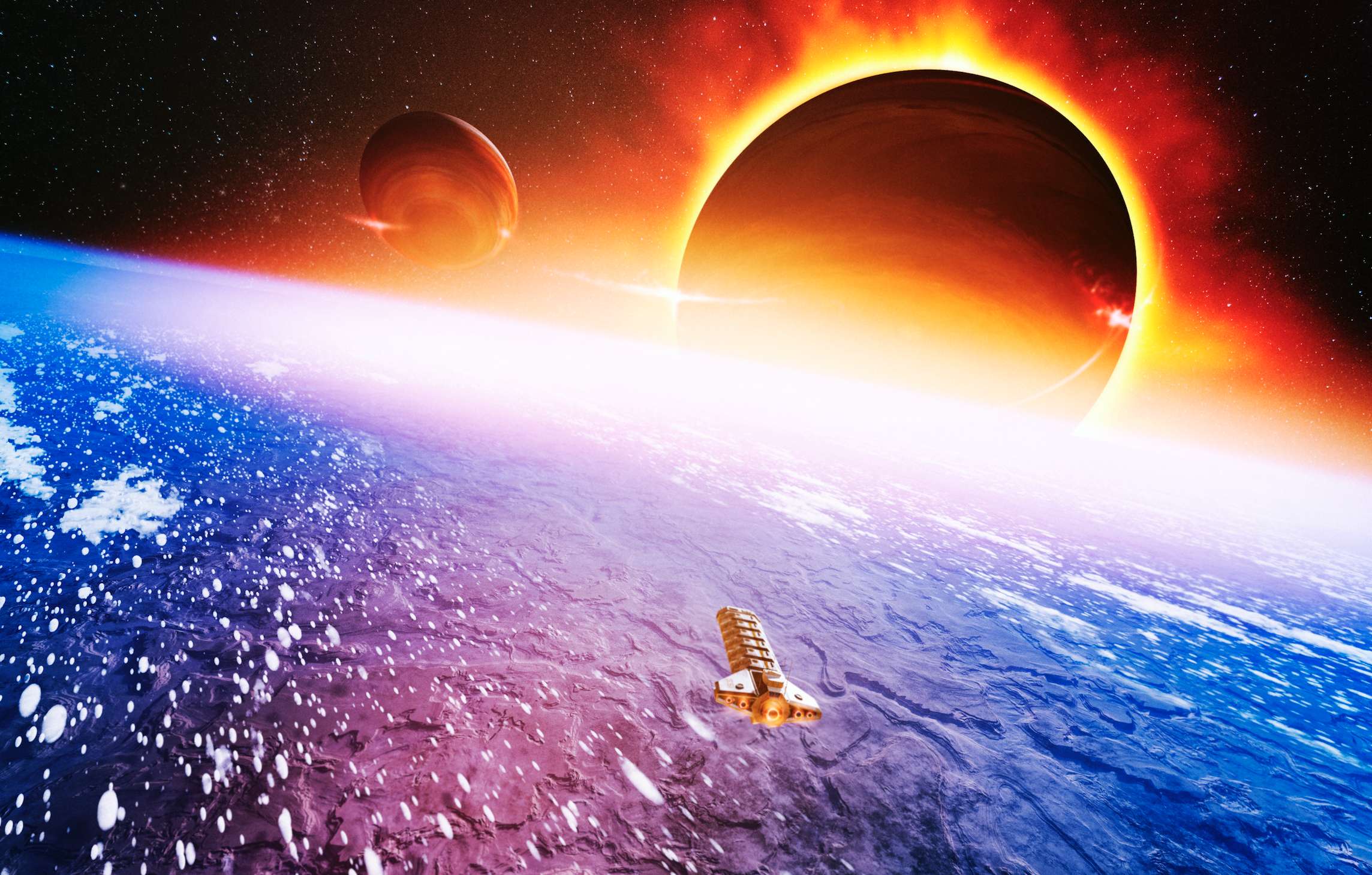Create a free profile to get unlimited access to exclusive videos, sweepstakes, and more!
Could NASA start seeking out alien civilizations by hunting for air pollution?

With a mind-warping multitude of alien civilizations potentially lurking somewhere out in the void, and the universe being so incomprehensibly vast, NASA scientists are going next level to seek out extraterrestrial neighbors by looking for signature signs of air pollution.
Just as visitors from other worlds might observe certain gases in our atmosphere as a smoking gun indicating the presence of an industrialized society surviving on our Big Blue Marble, so will astrophysicists peer into the cosmos to hunt for exoplanets exuding telltale traces of advanced life in the form of nitrogen dioxide (NO2).
On Earth, NO2 is produced by burning fossil fuels, but can also appear from non-industrial sources like biology, lightning, and volcanoes. With over 4,200 planets orbiting other stars already identified, it seems pollution might be a solution to narrowing down candidate exoplanets, or so declares a new study published online last week in the Astrophysical Journal.
“On Earth, most of the nitrogen dioxide is emitted from human activity -- combustion processes such as vehicle emissions and fossil-fueled power plants,” said lead author Ravi Kopparapu of NASA’s Goddard Space Flight Center in Greenbelt, Maryland. “In the lower atmosphere (around 6.2 to 9.3 miles), NO2 from human activities dominate compared to non-human sources. Therefore, observing NO2 on a habitable planet could potentially indicate the presence of an industrialized civilization.”
With the list of exoplanets offering suitable conditions for sustained life growing every day, the odds are mounting that at least one of these habitable worlds might harbor life which has evolved to a technological stage. Due to these planets' extreme distance from Earth, scientists are unable to hunt for civilization clues by launching probes to these heavenly bodies, but instead must employ the vigilant eyes of the latest mega telescopes around the globe in order to dissect their atmospheric makeup.
Such an atmosphere-based biosignature might be a blend of gases such as oxygen and methane. In the same vein, byproducts of exoplanet technology known as technosignatures could be the indication of a gas like NO2 that’s released as a consequence of industrial activity. Kopparapu and his colleagues' paper is the first instance of NO2 being studied as a potential technosignature.
“Other studies have examined chlorofluorocarbons (CFCs) as possible technosignatures, which are industrial products that were widely used as refrigerants until they were phased out because of their role in ozone depletion,” said co-author Jacob Haqq-Misra of the Blue Marble Institute of Science in Seattle. “CFCs are also a powerful greenhouse gas that could be used to terraform a planet like Mars by providing additional warming from the atmosphere. As far as we know, CFCs are not produced by biology at all, so they are a more obvious technosignature than NO2. However, CFCs are very specific manufactured chemicals that might not be prevalent elsewhere; NO2, by comparison, is a general byproduct of any combustion process.”
By harnessing computer models to predict whether NO2 pollution might produce a signal practical enough to be detected by modern telescopes, the team found that atmospheric NO2 strongly absorbs some wavelengths of visible light, seen as observable light reflected from an exoplanet as it circles its star.
According to their findings, for an Earth-like planet orbiting a Sun-like star, a civilization producing equal amounts of NO2 could be detected up to 30 light-years away with approximately 400 hours of observing time using advanced NASA telescopes.
It was also determined that cooler suns, designated as K and M-type stars, will produce a greater NO2 signal that can be detected more easily as a result of their reduced ultraviolet light keeping NO2 from experiencing breakdown.
“On Earth, about 76 percent of NO2 emissions are due to industrial activity. If we observe NO2 on another planet, we will have to run models to estimate the maximum possible NO2 emissions one could have just from non-industrial sources," explained Giada Arney of NASA Goddard, a co-author of the paper. "If we observe more NO2 than our models suggest is plausible from non-industrial sources, then the rest of the NO2 might be attributed to industrial activity.”




























